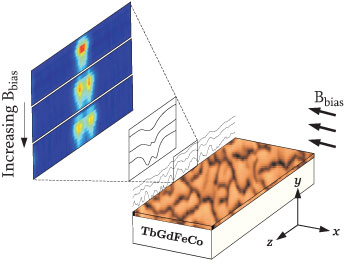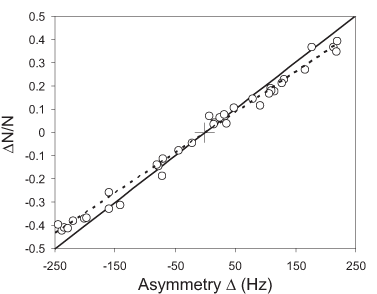 |
Quantum Sensor of Asymmetric Potentials
17th January, 2007
Development of quantum tools and sensors is one of the major priorities of ACQAO. The team at the Swinburne University of Technology (Brenton Hall,
Shannon Whitlock, Russell Anderson, Peter Hannaford and Andrei Sidorov) have produced a unique sensor that is based upon the use of Bose condensed
rubidium atoms on an atom chip for measuring extremely small potential gradients. Their paper describing this work entitled "Condensate splitting
in an asymmetric double well for atom chip based sensors" is now published in Physical Review Letters [98 30402 (2007)].
The paper details a number of experiments which were performed using a unique hybrid atom chip which contains a thin film of perpendicularly magnetised
material (GdTbFeCo). This material is very similar to that used in next-generation hard disks since it has properties which are advantageous for high
density information storage. However at Swinburne researchers have tuned the properties of the magnetic material such that they are more appropriate
for Bose-Einstein condensate formation and atom optics experiments. A small amount of magnetic inhomogeneity was introduced into the atom chip by
excessively heating the film. This in turn produced a random structure or "corrugation" in the magnetic trap which exists above the atom chip. Within
this corrugated potential one structure stood out above all others – a controllable double well system which allowed axial splitting of the condensate
without excitation.
By moving a condensate of 4.6 x 104 atoms towards the film surface researchers showed that the condensate could be adiabatically split into
two components and that the relative number of atoms in each component was simply related to the energy difference between the bottoms of the double well.
Due to the extremely low temperature associated with this condensate (~100 nK) the splitting process proved remarkably sensitive to tilts and magnetic
gradients. The experimental measurements showed excellent agreement to a simple model that was developed to understand how the fractional number
difference (ΔN/N=NR-NL/NR+NL) could be related to the double well asymmetry (Δ). This inturn was
used to motivate future work that may improve the sensitivity to a level which is interesting for remote mineral exploration and prospecting.
 |
Schematic representation of the atom chip showing the random corrugated potential above the film edge, the single to
double well potential and the condensate splitting process measured by absorption imaging. |
| |
 |
Fractional number difference (ΔN/N) versus the double-well potential asymmetry (Δ). The experimental
data points (open circles) and the line of best fit (dashed line) compare well with the simple analytic result (solid line). |

|